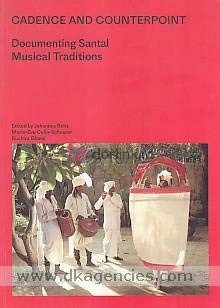Writer : Johannes Beltz
Edited By : Marie-Eve-Celio-Scheurer
Compiled By : NA
Translated By : NA
Publishers : Niyogi Books India
- Shipping Time : 10 Days
- Policy : Return/Cancellation?
You can return physically damaged products or wrong items delivered within 24 hours with photo/video proof.
Contact Customer Support for return initiation and receive return authorization via email. Securely package for return.
Refunds for eligible returns are processed within 7-10 business days via Bank Transfer.
Order cancellation allowed within 24 hours of placing it. Standard policy not applicable for undamaged/wrong product cases. Detailed info. - Genre : Art & Culture>Dance & Music (including Folk Songs)
- Publication Year : 2013
- ISBN No : 978-93-83098-92-7
- Binding : Flexibound
- Pages : NA
- Weight : 630 gms
- Height x Width x Depth : 8.5x5.5x0.5 Inch
If so, it will be notified
About the Book
Echoes of the Santals: Music, Art, and Identity
The Santals, India’s largest tribal community, are spread across Jharkhand, West Bengal, Odisha, Bihar, and beyond, yet they remain bound by a distinct geography and vibrant cultural heritage.
Renowned for their rich traditions of music and dance, Santal melodies have left an indelible mark on mainstream Indian music. Their unique way of life has long drawn the fascination of researchers, scholars, and explorers, who have sought to capture and share their stories, art, and musical traditions.
This exhibition showcased three key elements of Santal musical heritage:
Musical Instruments – Featuring the Banam, a beautifully carved bowed monochord that stands as the only chordophone in Santal music.
Drums and Flutes – The Tamak and Madal drums, along with various flutes, form the rhythmic heartbeat of Santal culture.
Jadupatua Scroll Paintings – Created by another community for the Santals, these storytelling scrolls play a significant role in their visual traditions.
A crucial aspect of the exhibition was the meticulous documentation of Santal traditions over time. Historic photographs, some captured by notable musicologists Alain Daniélou and Deben Bhattacharya, trace the community’s evolution since the 1950s. Original audio recordings from 1914 and rare videos from the late 1960s to today provide an immersive journey into the living legacy of the Santals.
"The music of the Santals is not just a sound—it is a heartbeat, a story, a legacy carried through time."

